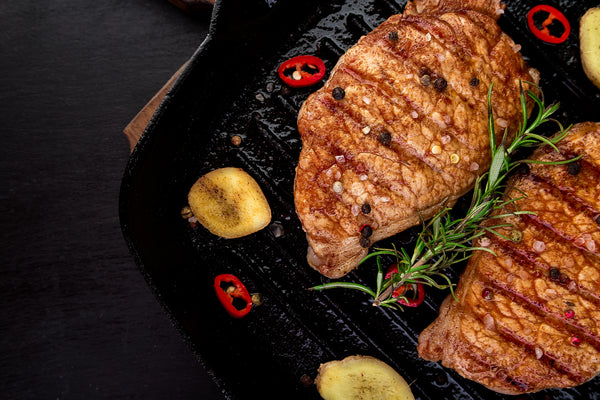
Which is the Best Charcoal for Barbecue and Smoking?
The charcoal that you cook over is important – for heat and often for flavour. But not all charcoal is created equal. What’s the difference between different charcoals, and which is the best charcoal? Read our guide to find out, and get set for the weekend.
Check out this post from our friends at Philleighway Cookery School…plus keep your eyes peeled for their upcoming video on how to BBQ Jacobs Ladder short ribs, available to buy in our BBQ smoker box – BBQ Smoker Delivery
At this time of year, lots of us are taking every opportunity that we can to cook outside, over fire. Unlike in your kitchen, where you turn on the stove and easily controllable heat just happens, cooking over fire involves you creating and managing your heat source, as well as cooking. That means selecting fuel, lighting a fire and tending it until it is at the right temperature to cook over. Most people barbecue over charcoal, although you may also use firewood to start or feed your fire. But not all charcoal is created equal.
So what’s the difference between different charcoals, and which is best?


What Is Charcoal?
Charcoal is wood that has been burned (or cooked) slowly in a kiln in the absence of oxygen, burning off the water and volatile compounds and leaving black carbonised material. Artists draw and sketch with it, and chefs cook over it. When you burn it again it burns as embers do, hot and pure, and holds an even heat for a long time. This makes it easier and more predictable to cook over than flames from a live fire.
Lumpwood Charcoal vs Briquettes
There are two types of charcoal that you can buy to barbecue with: lumpwood charcoal, and charcoal briquettes. Lumpwood looks like black and broken up bits of branches – it is still recognisable as something that was once wood. It is made from hardwoods (such as oak, ash or beech) and you can still recognise it as something that was once wood. It is pure, however less uniform in size and shape and it can burn faster and hotter. It can impart a woodsmoke flavour so you can treat it like an ingredient when cooking with it. Charcoal briquettes are manufactured using compacted charcoal sawdust, but made into uniform shapes (like small cakes). They often have other material or additives included to bind them together, to help them catch and burn, and to make sure that they burn at a steady rate. They are more predictable and can provide cooking heat for longer, but many chefs don’t like the fact that they have other ingredients that could potentially taint the flavour of their food. If you need predictable heat over a long period (if you’re cooking large cuts or joints of meat, for example) they can be a good option, and they’re a cheaper option too.
Where To Buy Charcoal
You can buy charcoal from supermarkets or even your nearest garage, but this will almost certainly be briquettes. Try to avoid the “ready to go” disposable barbecues or pre-pack bags, as most of these have additives to help them catch fire and burn faster and will almost certainly taint your food. Good quality briquettes will provide a reliable and even cooking temperature, and the heat will persist for long enough for you to cook over.
Restaurant quality lumpwood charcoal can be ordered directly from producers, and is well worth it if you’re serious about cooking over fire. I use Cornish Charcoal but you should be able to find a good producer local to you. Reputable producers will be using hardwood from well managed forests, and you can be confident in the provenance and quality of the product. None of us want to be cooking over the remains of virgin rainforest.
How To Cook With Charcoal
A hand-held charcoal chimney is a great bit of kit. Rather than starting your fire in your barbecue, you start it in the chimney and add charcoal. The chimney is designed to get a fire burning incredibly hot and incredibly quickly, and once your charcoal is glowing red hot you can tip it out into your barbecue or cooking base. If you need to add more coals later to prolong your cooking time or to expand your cooking area, use the chimney again so that you’re adding red hot embers to your cooking fire rather than messing with it by directly adding more fuel and introducing flames.
I won’t go into specifics like offset cooking or using specific hardwoods to smoke or flavour your food here – each of those warrant detailed articles of their own, and we cover these sorts of things in our woodfired cooking and asado cookery courses. Hopefully though, you’re now a little more knowledgeable about fuel for cooking outside and will be able to make an informed decision next time you’re preparing for a barbecue. Which will probably be this weekend, right?
